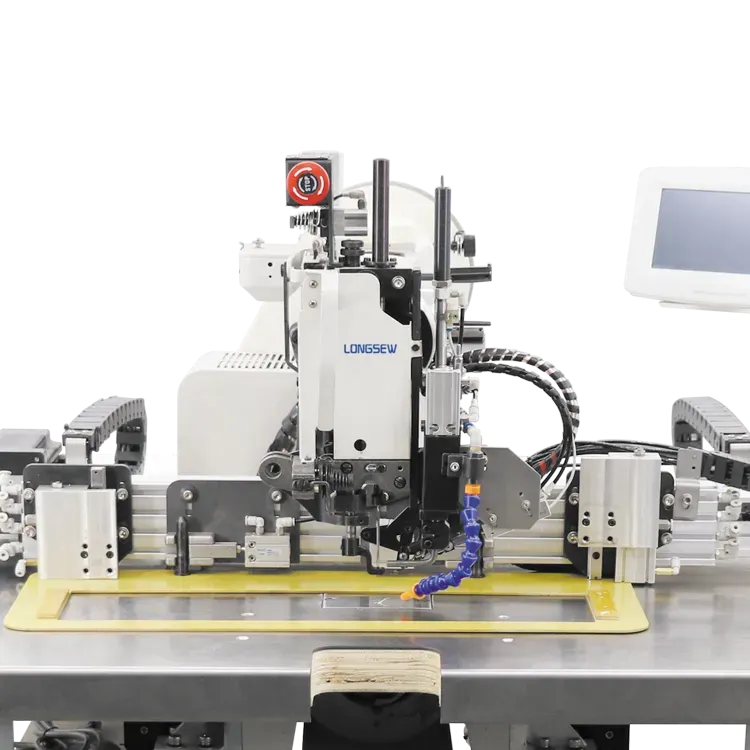Comparative Analysis of Locking Machines in Sewing Techniques and Their Applications
The Evolution and Importance of Sewing Locking Machines
Sewing machines have revolutionized the textile and fashion industries since their introduction in the 19th century. Among the various types available, the locking sewing machine has played a critical role in enhancing efficiency and producing high-quality stitched fabrics. This article delves into the features, benefits, and significance of sewing locking machines in modern manufacturing.
Locking sewing machines, often referred to as “lockstitch” machines, operate by interlocking two threads—typically a top thread and a bobbin thread—to create a strong, durable stitch. This system is particularly renowned for its versatility and is widely used in a range of applications, from garment construction to upholstery. The mechanism behind these machines consists of a needle that punctures the fabric and a hook that catches the bobbin thread, ensuring that the two threads are intertwined securely.
One of the primary advantages of locking sewing machines is their ability to produce a tight, even stitch that withstands stress and strain. This is especially important in high-wear items, such as clothing, bags, and other fabric goods. The durability of the lockstitch ensures that seams remain intact even after prolonged use, making it a preferred choice among manufacturers.
In addition to strength and durability, locking sewing machines offer a high level of precision. They can sew intricate designs and patterns with remarkable accuracy, making them essential for detailed apparel and decorative sewing. This precision also allows for the use of various fabrics, including lightweight materials like silk and heavier textiles such as denim, broadening the scope of what can be achieved in garment and product design.
sewing locking machine

As industrial technology continues to advance, modern locking sewing machines have incorporated various features that enhance functionality and user experience. Automatic thread trimming, speed control, and programmable stitch patterns are just a few innovations that have made these machines more efficient and user-friendly. These features not only save time but also reduce the risk of errors, resulting in a more streamlined production process.
The importance of sewing locking machines extends beyond manufacturers to the broader economic landscape. The garment industry, which relies heavily on these machines, is a significant contributor to global trade and employment. Countries with robust textile sectors often see substantial economic growth, and the efficiency provided by locking sewing machines plays a pivotal role in maintaining competitiveness in a fast-paced market.
Furthermore, as sustainability becomes a focal point in the fashion industry, the reliability and quality of lockstitch machines contribute to producing longer-lasting products. This aligns with the growing consumer demand for ethically-sourced, sustainable fashion, as durable garments reduce waste and promote a circular economy.
In conclusion, sewing locking machines have established themselves as indispensable tools in the textile and fashion industries. Their ability to create strong and precise stitches makes them a favorite among manufacturers, contributing to the production of high-quality, durable products. As technology continues to advance, the evolution of these machines will undoubtedly play a crucial role in shaping the future of textiles, ensuring that they remain relevant in a rapidly changing world. The legacy of the locking sewing machine is not just about stitching fabric; it embodies the innovation and craftsmanship that drive the textile industry forward.
-
Industrial Cylinder Arm Sewing Machine: Revolutionizing Heavy-Duty SewingNewsJul.28,2025
-
Cylinder Arm Sewing Machine: Perfect for Special Sewing ApplicationsNewsJul.28,2025
-
Cylinder Bed Sewing Machine: Essential for Sewing Complex MaterialsNewsJul.28,2025
-
Heavy Duty Sewing Machine: The Essential Tool for Industrial ApplicationsNewsJul.28,2025
-
Computerized Pattern Sewing Machine: Revolutionizing Precision StitchingNewsJul.28,2025
-
Heavy Duty Industrial Sewing Machine: Power Meets PrecisionNewsJul.28,2025
-
Leather Sewing Machine: The Industrial Standard for Tough MaterialsNewsJul.18,2025





























